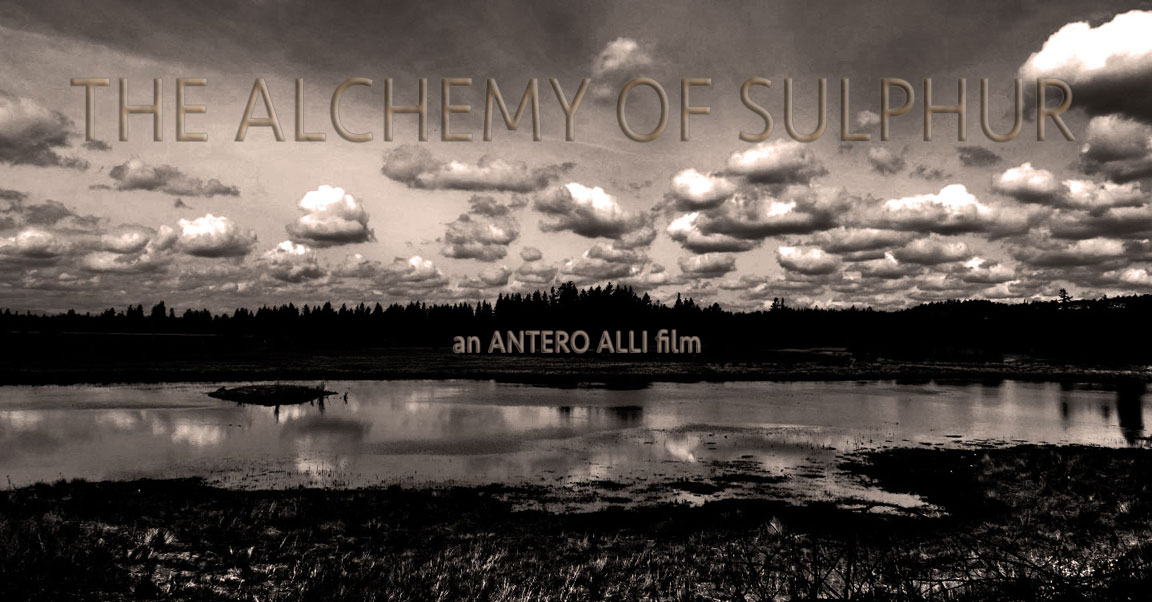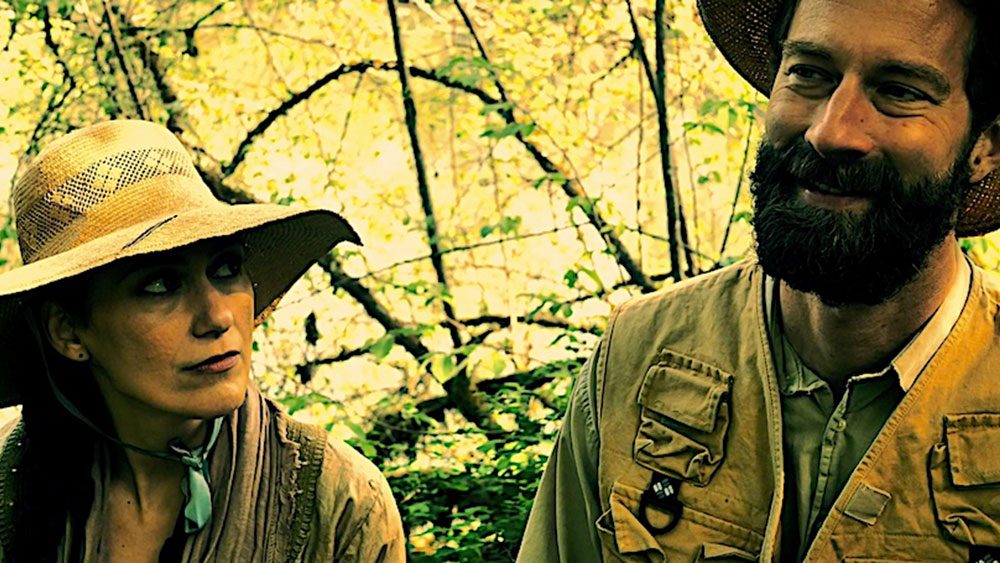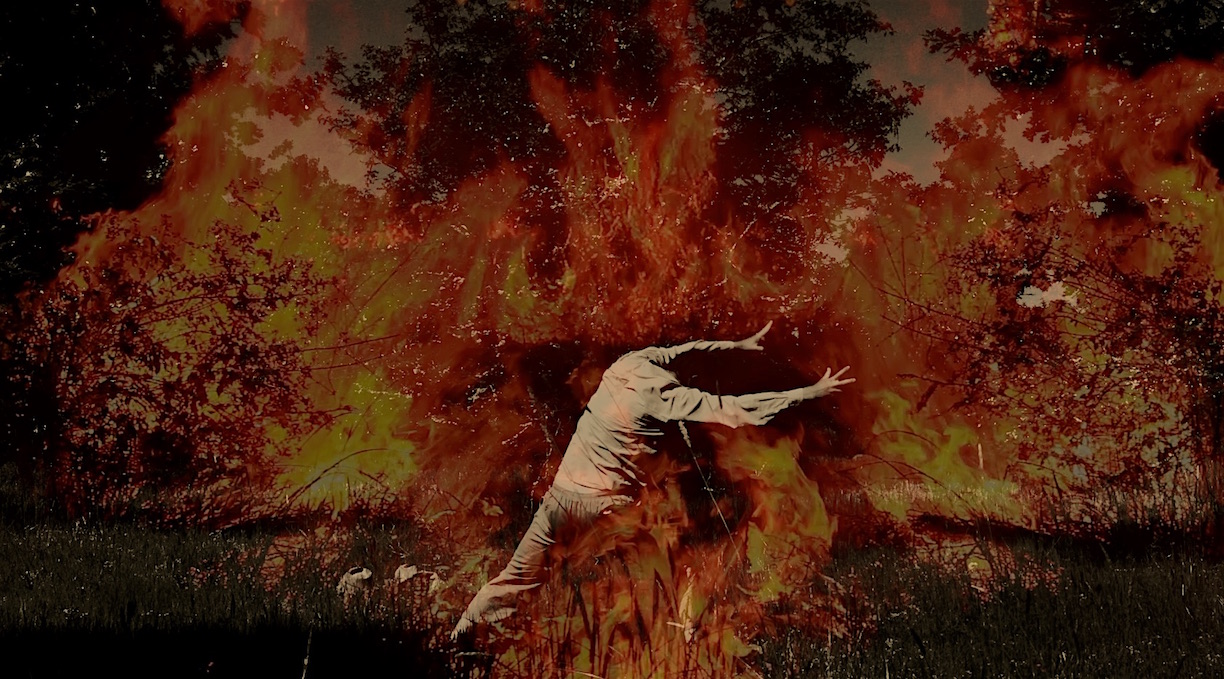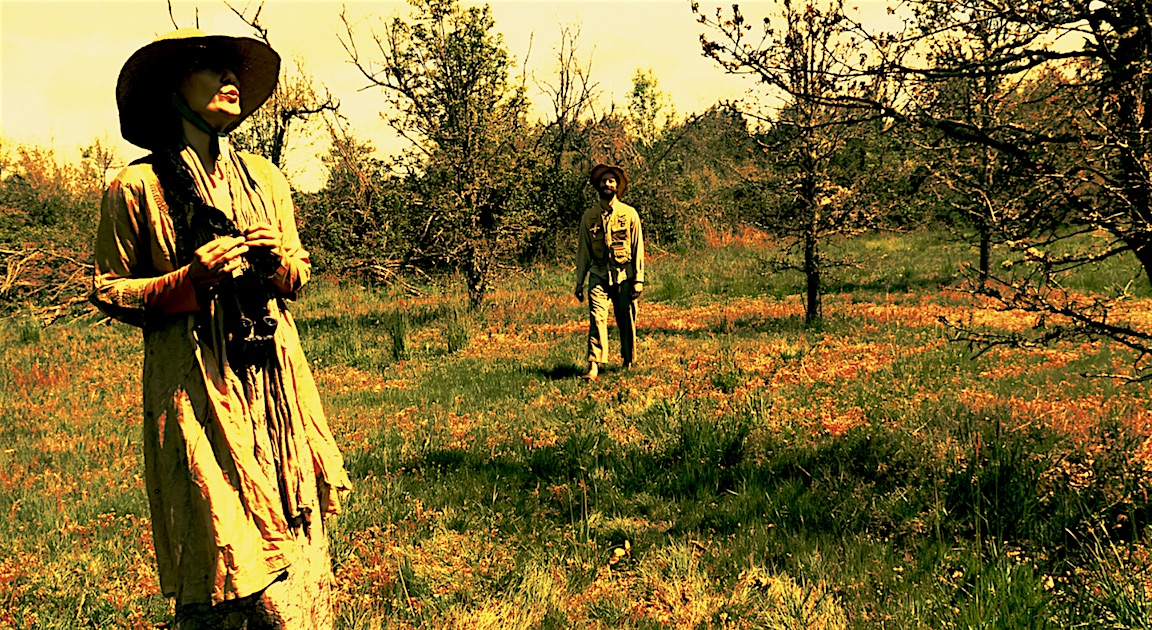Film Reviews
I only recently got hip to Alli and enjoy his work very much. Alli is old enough to remember when independent films were an alternative to classic Hollywood movies instead of just low-budget versions of them. The Alchemy of Sulphur is crafted like classic character-driven independent films like those of Sayles, Cassevettes, and Charles Burnett. Alli makes his films available to the world to watch at no charge, which is amazing considering the quality of the work. His well-done screenplay here has impressive pacing with no self-indulgent passages that strain viewer engagement. Even though it delves into heavy concepts, I did not get lost or feel I was missing anything anytime.
Helping the storytelling is Alli’s sumptuous cinematography, which differentiates reality from literary fantasy with black and white versus color sequences, just like in The Wizard of Oz. The color uses this interesting mystery filter that enhances the lovely textures of the poisoned trees in the forest in the trippiest way. The expressionistic use of nature images is some of the highlights of the short story sequences. Alli revisits the fantasy world frequently but never tarries too long on, as these elements are meant to reflect the primary narrative in the real world. The symbolism used for the way the fire element of sulphur is used on the poisoned oaks as it relates to Hope’s romantic life is relevant and unusual. The insights into human behavior are exceptionally poignant.
The Alchemy of Sulphur has some of the best representations of West Coast artist culture I have seen. The hourly rhythm of the creative life is faithfully represented. We see artists diligently procrastinating, industriously embellishing how close they are to meeting their deadlines with their editors, all while running out for more tea. Spot f*****g on. There are even specifics only those in the game know, like people who need to manufacture crises to feel creative. The performances are up to the task. Of special note is Schwell’s turn as Calliope. The ominous shamanic power Schwell wields effortlessly forces the viewer to take what she is showing seriously. Best not to mess with her. Her eyes spit psilocybin. Leads Rasti and Allen do fantastic jobs not only being believable artists but also being believable as non-artists when they are playing the short story characters. The big flourish of the production would have to be the show-stopping score by Sylvi Alli.
As in her husband’s other films, like Tracer, Sylvi Alli creates this wonderful music that electrifies the camera imagery. This time around, we have a lot of gorgeous-sounding songs of hers, which are reminiscent of Dead Can Dance and other artists from England’s 4AD label. The Alchemy of Sulphur is a strong work of cinematic art that is engaging and accessible. The fact that challenging work like this is being made available to all is revolutionary. It is like having the famed New York Millennium Film Workshop in your pants pocket. Isn’t the future swell?
(Edited for brevity and omission of spoilers. - AA)
- Michael Talbot-Haynes for
filmthreat.com (entire review)
January 18, 2023
In Antero Alli’s moving, beautifully wrought feature film, The Alchemy of Sulphur, real and imaginary worlds frequently overlap. The film’s prolog succinctly lays out the themes:a folksy looking man in a beard and sandals introduces himself as “a character in a story being written by a woman named Hope.” But he claims that Hope is also a character in a story which he is writing, an allusion, perhaps, the the oft-noted phenomenon that writers feel that the characters in their stories are telling them what to write. “As with any literary character,” he continues, “we are figments of the author’s imagination.” Alli sets up a scenario which explores the relationship between external reality and the imagination. The film questions our notions of which of them is, in fact, more “real.” Like films since The Wizard of Oz and Stalker, Alli uses black and white to denote one level of reality (Hope’s external environment), and color to denote another (her fictional story).
What’s less clear, from the outset, is how the levels affect one another. That both the color and the black and white photography are stunningly beautiful only helps to make these distinctions more effective. The film’s plot ingenuously articulates Hope’s transformation and struggle, continuing to intertwine different layers of fiction, fantasy, inner vision, and daily life, with the two wise women acting as key catalysts for change. Although there are several moments of drama, overall, the pace is measured and contemplative, but expertly crafted so that, once you get pulled into its slower pace, every moment counts, and the pauses and silences are full of expressive nuance. The slow pace becomes essential, allowing the viewer to enter into Hope’s intuitive flashes, which is where the story really takes place. Alli effectively uses dance, music, and subtle visual effects to poetically develop the alchemical aspects of the story.
The film’s plot ingenuously articulates Hope’s transformation and struggle, continuing to intertwine different layers of fiction, fantasy, inner vision, and daily life, with the two wise women acting as key catalysts for change. Although there are several moments of drama, overall, the pace is measured and contemplative, but expertly crafted so that, once you get pulled into its slower pace, every moment counts, and the pauses and silences are full of expressive nuance. The slow pace becomes essential, allowing the viewer to enter into Hope’s intuitive flashes, which is where the story really takes place. Alli effectively uses dance, music, and subtle visual effects to poetically develop the alchemical aspects of the story.
Alli’s films have always explored our relationship with invisible worlds, but in The Alchemy of Sulphur, we have the master’s voice at the top of his game, allowing the language, story, images and sounds to distill out of the ether and arrive in our consciousness in crystalline, perfect form, a true act of cinematic alchemy.
(Edited for brevity and omission of spoilers. - AA)
- David Finkelstein,
Lake Ivan Film Journal
May 2, 2022. New York City
The Alchemy of Sulphur is Alli’s first feature created under pandemic conditions. After cancellation of the theatrical premiere of his last, The Vanishing Field (2020), he released it, and the rest of his diverse oeuvre, on YouTube. A move his cult following no doubt applauded, it seems to have renewed Alli. While his unique new film distils his strengths as a visionary, he’s curbed distracting stylistic habits.
How has the Covid factor affected Alli’s process? It hasn’t, at first glance; his defining concerns persist: the fluid relationship between waking and dreaming or conscious and unconscious states; the transformative power of sacred (as distinct from secular) ritual; the cyclic play of archetypes within human and broader nature, such as the muse, the sage, the trickster, the shaman and so on… In fact, if not for a few unobtrusive devices, Hope could be writing her story in the 1980s or ’90s (it’s far-fetched that any elite NY journal today would publish romantic fiction dense with arcane jargon and archaic diction yet light on irony). Has Alli retreated from a grim outer world to the realms of fantasy like another quirky auteur, Wes Anderson? But no: the oaks that preoccupy Phineas are dying.
Shooting a feature film on a shoestring during a pandemic no doubt takes more than usual resolve and resourcefulness. Realism. Yet Alli’s style tends towards the surreal; even, in some previous work, psychedelia. Still, 28 years of filmmaking may have mellowed him. His introspective romance benefits from a new restraint. Its more fantastic elements concern the central character, Hope.
So how does Hope survive? Arts grant? Crowdfunding? Investments? Inheritance? Codependent or not, Uber driver Ben can’t afford to support her. But Hope doesn’t need to be believable. No mere stereotype, she’s an archetype: Tortured Genius. Despite her self-unknowing, inspiration flows through her (while she tortures Ben). Historically, it’s an archetype more often associated with men, hence the stereotypically female muse (Dante’s Beatrice, Alice Liddell, Zelda Fitzgerald etc.). Alli shrewdly reverses the genders. The muse who sweeps Hope off her feet is unorthodox performer Keith (Douglas Allen), familiar from Alli’s last film. And there’s another reversal: the character, not the muse, appears first. Keith is familiar to Hope, too: Phineas sans beard. (Kudos to Alli for maximising his brilliance.)
Archetypes are scarce in mainstream scholarship today. While Freud, like Darwin and Marx, remains a founding father of modern thought, his far subtler successor, Jung, has been shelved in history’s storeroom. Mainstream psychology takes its cues from the DSM-5 (psychiatry’s bible). So narcissism, cut loose from myth, is now a mere ‘personality disorder’, even if it afflicts the West on a scale that overshadows Covid. Yet Alli’s outwardly innocent tale of a toxic relationship, paralleled by an allegory of treatment, proposes a cure for a scourge direr than any virus. Sulphur, the principle of alchemical fire, can be applied with lime to a blighted oak, or invoked to heal a sick psyche, to rekindle love and intimacy.
The rarefied world of Alli’s characters points to a more substantial reality than the empty-image limbo the masses inhabit. Only those who’ve lost touch with or never developed an inner life (call it what you like: spirit, soul or the psyche) can be coerced into trading their birthrights for a fantasy of entitlement. Alli’s vision typically reaches beyond materiality to a timeless, unrestricted zone forever on hand to inspire those of us out of step with, or awake to more than, the zeitgeist.
(Edited for brevity and omission of spoilers. - AA)
read the entire review at OBESERVER OF TIMES
November 5, 2021. Austraila
I’ve written and spoken frequently about the impossibility of finding love when lost in “the projection of the Dream Lover,” — not a phrase I commonly use but was thusly stated by one of the characters in Antero Alli’s spellbinding, evocative film The Alchemy of Sulphur.
Hope longs for love and is unhappy with her current, ordinary boyfriend. She writes a romantic short story starring her ideal man, her Dream Lover. In addition to this fantasy creation, she meets a man in a tea house on whom she immediately and completely projects her imaginings. By the end of the film both of these men, the character in her story and the tea-house man, turn out to be sterile, incapable of the fire (sulphur) needed to sustain life-giving connection.
But before Hope realizes the inevitable failure of “love” of this type, she is mentored by two charismatic, archetypal Wise Women, characters rarely portrayed outside Jungian-inspired nonfiction. These two mysterious women decide to initiate and help awaken Hope who has plaintively stated she doesn’t know who she is. “You are a sorcerer of words; you are under your own spell repeating your same story,” one of them tells Hope. Love needs to be alchemically transformed.
In the film, we witness two powerful shamanic rituals; the one that ends the film is a breathtaking scene of a man dancing to haunting music, burning, consumed in flames. Through the fire of desire and the mentoring of older women, Hope comes to realize that her dreams are barren, and the fecundity of life is to be found with the real, embodied, human being next to her who has been there all along.
At a time when few artists are staying in touch with the Mystery, Alli’s film enchants the viewer with a lyrical, ethereal portrayal of the beauty of shadows and the potential aliveness of all that is hidden. In fact, one of the characters states that it is what we cannot see that connects us all.
If you are into personal and spiritual growth, you will be moved by the film’s message and the portrayal of Hope’s journey to greater awareness. If you are visually and artistically inclined, you will sit in awe at every artistically-arranged frame. If you live inside both these perspectives, this is your movie.
-Catherine Aufman, LMFT
March 22, 2023. Los Angeles
more reviews to come...
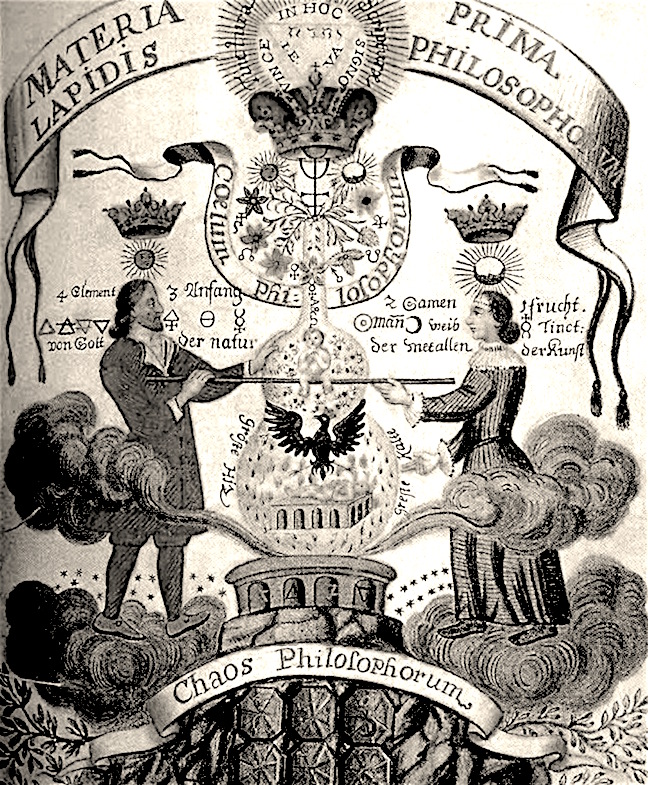
~ ALCHEMICAL SULPHUR ~
Sulphur symbolizes the fire element, the sexual energy and vitality.
The highest aspects of this sexual fire are expressed through
the
Divine Mother Kundalini,
the force of purification.
The toxic
aspect of this fire is called
arsenic sulphur,
the ego of lust and possession.
